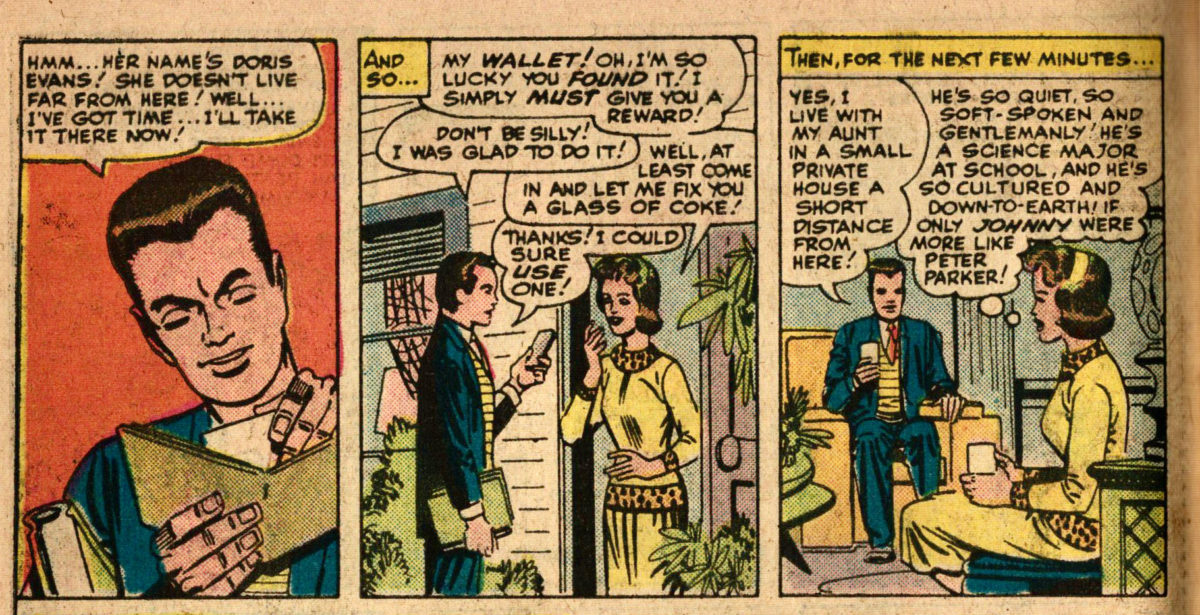Featuring: Tales of Asgard
Release: June 2, 1964
Cover: August 1964
12 cents
Written and drawn by the prize-winning team of: Stan (The Man) Lee and Jack (King) Kirby
Inked by: Vince Colletta
Lettering: Art Simek
5 pages

For several months now, Stan has used all kind of creative license in the credits, applying clever nicknames to everybody. Two months ago in Fantastic Four #28, Jack was referred to as “The King”. Now, we get the credits that will resonate through the decades and become basically the official nicknames of the famous duo: “Stan (The Man) Lee and Jack (King) Kirby”.
This might be the first time they’ve ever shown up. Certainly that I’ve come across. Caveat that I’m reading these Marvel stories in reprints, so miss many house ads and letters pages, which are likely sources of the nicknames. This is definitely the first time we’ve seen both “The Man” and “King” within an issue’s credits.
This is the second story starring Balder, depicted here in what looks to be a Disney movie. Loki is jealous of the favoritism Odin shows to Balder, second only to his love for Thor. Loki decides to kill Balder. The only snag is the gift of invulnerability Odin had bestowed upon Balder last issue.
Continue reading “Journey Into Mystery #107, Story B”


























